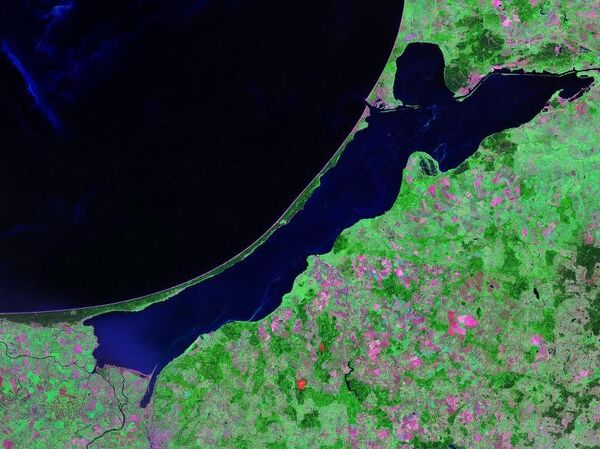The freshwater bay, which is bisected by the Polish-Russian border, is currently separated from the Sea by the sandy Vistula Spit.
According to the Polish government's plans, the proposed 1.3 km long, 5 meter-deep canal will run across the Vistula Spit and link the lagoon with Gdansk Bay in the Baltic Sea. Construction of the 880 million zloty ($216 million) project is expected to last four years, starting in 2018.
The Polish government maintains that construction of the canal will bring significant benefits for the local economy and make Elblag, the biggest port on the lagoon, the fifth biggest port in Poland.
During a parliamentary debate on Friday, Polish Deputy Minister for the Maritime Economy and Inland Waterways Grzegorz Witkowski claimed that the canal's construction will be not only be beneficial for Elblag but the rest of Eastern Europe, including Belarus, Russia and Ukraine, Polskie Radio reported.
However, the new project is opposed by local residents in Krynica Morska, a municipality located on the Vistula Spit, as well as environmentalists who fear for the fate of precious local habitats.

Ecologist Felix Alekseev, a former deputy in the Kaliningrad regional parliament, told Sputnik Polska that the environment risks vary according to the type of construction undertaken, but are in any case significant.
The first option would be to rupture the sand bank with a shipping canal 20 meters wide and five meters deep, which would cause a huge increase in the exchange of water between the Vistula Lagoon and the Baltic Sea.
"If this is just a hole through the spit without a deepening the fairway but with strengthened banks, then the consequences for the freshwater ecosystem of the lagoon will be clearly negative. The western part of the lagoon is entirely freshwater, as is the mouth of the Pregolya River. The addition of more saltwater from the Baltic Sea will raise the lagoon's salt level to practically that of the sea, and all the freshwater fauna would disappear," Alekseev explained.
In the second scenario, the canal would be built with locks that control the flow of sea water and reduce the hazards for the local ecosystem. However, the canal would still need constant dredging because of the silty and sandy nature of the land.
"The next problem is that the Polish waters of the bay are shallow and a fairway about five meters deep would be needed to allow for the passage of ships with large displacement. Given the silty and sandy nature of the sea floor, the sides of the shipping canal will be unstable and need to be constantly dredged, which will also adversely affect the ecology of the semi-enclosed Vistula Lagoon," Alekseev said.
"A lot will depend on the construction of the canal. Russia will closely monitor the activities of the Polish constructors and won't fail to protest if this poses a threat to the ecosystem and the entire economic system that is connected with it."
Alekseev said that any changes Poland wants to make to the Vistula Lagoon must be agreed upon with Russia, since the water transverses the Polish-Russian border.
"Since the Vistula Lagoon is a trans-boundary body of water, under international law all activities in its waters should be agreed and therefore the Polish side should coordinate these actions with Russia. This is international law. There isn't much information on the subject, but on the basis of what has been written in the press we can assume that the water level is likely to match that of the sea and accommodate the water displacement of vessels of up to four meters, according to the project submitted to the Sejm. These works will certainly affect the hydrological system. In any case, the environmental effects will be very serious," Alekseev said.
Never miss a story again — sign up to our Telegram channel and we'll keep you up to speed!





